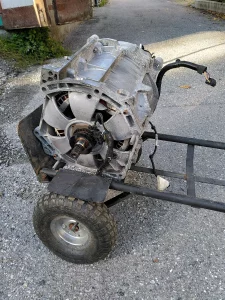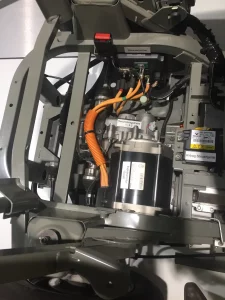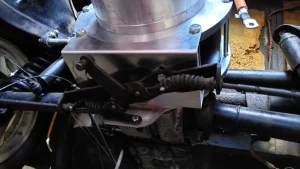Choosing the right battery is dependent from many factors. The most obvious one is of course the desired range, which translates into a target kWh value of energy.
But in practice it is very hard if you start off from a specific target range, as the main restricting factor is usually the available space, and then also the target Voltage of the system.
So these three factors (space, capacity and voltage) create a magic triangle with sometimes conflicting goals. Now we need to solve the dependencies in the right order.
In conversion projects, the space is usually the most important factor that dictates. The second factor is usually the target voltage, and the capacity (=range) is therefore the last and dependent variable.
So let’s go through these factors step by step:
Our goal is to get the most kWh into the space available. The measurement here is kWh/Litre of space.
The existing battery box in the back of the Twingo is 800 x 520 x 280 mm and was designed to hold the ZEBRA Molten-Salt Battery. The total volume of the battery is therefore 116 Litres. We would now need to pack this space as densely as possible to get the most energy in, not forgetting about cooling etc. in the process.
The target Voltage in our system is 270V. This is the original nominal Voltage of the Molten-Salt-Battery, and we need to stay in that region because of all the other components in the drivetrain such as Inverter, Converter, Motor, Charger, Heating etc.
The target capacity would ideally be equal or higher than 20 kWh, as this is the capacity of the existing Molten-Salt Battery and also the capacity of the first series Renault Zoe, which proved to be a very capable car that brought my family of five all the way from the Swiss Alps to Barcelona on holidays back in 2016 without any problem – so that is about the behavior that I would need!
See the next articles for different battery options.


